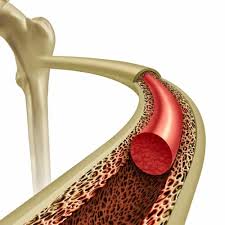
Back Pain Battle: Artificial Disc Replacement vs. Spinal Fusion
Back pain is a common issue that can significantly impact a person’s quality of life, causing discomfort and limiting their ability to perform daily tasks. While there are various treatments available for back pain, some cases may require surgery to relieve the pain and restore mobility. Spinal surgery is a significant decision and can be a daunting prospect, especially when faced with the decision of choosing between artificial disc replacement and spinal fusion.
Artificial disc replacement involves replacing a damaged or degenerated spinal disc with an artificial one, while spinal fusion surgery involves permanently connecting two or more vertebrae in the spine to stabilize the spine and reduce pain. Each procedure has its unique benefits and drawbacks, and it’s essential to understand these to make an informed decision.
In this article, we’ll provide you with a detailed comparison of artificial disc replacement and spinal fusion surgery. We’ll take a look at the indications for each procedure, their benefits and risks, the recovery process, and the success rates associated with each procedure. By the end of this article, you should have a better understanding of these two spinal surgeries and which one may be the better option for you.
Spinal Fusion Surgery vs. Artificial Disc Replacement
Artificial disc replacement and spinal fusion are two common surgical options for treating back pain. While both procedures aim to alleviate pain and restore spinal function, they differ in terms of how they achieve these goals. Spinal fusion surgery involves fusing two or more vertebrae together, which creates a solid bridge and eliminates mobility in that section of the spine. Artificial disc replacement , on the other hand, involves removing the damaged disc and replacing it with an artificial one that preserves the natural motion of the spine. The decision between these two procedures depends on a variety of factors, including the underlying cause of the back pain, the patient’s age and overall health, and their personal preferences and goals.
Both artificial disc replacement and spinal fusion have their respective advantages and drawbacks. Spinal fusion surgery is an established treatment that can be effective in reducing back pain caused by conditions such as spinal stenosis and herniated discs. However, the loss of mobility in the fused segment can lead to increased stress on adjacent spinal segments, potentially causing additional pain and requiring further surgery down the line. Moreover, the recovery time for spinal fusion surgery is usually longer than for artificial disc replacement, and patients may need to wear a brace for several weeks or months.
Artificial disc replacement is a newer, less invasive surgical option that offers several benefits over spinal fusion surgery. It preserves the natural motion of the spine, reducing the risk of adjacent segment disease and potentially avoiding the need for further surgery. Furthermore, the recovery time for artificial disc replacement is generally shorter than for spinal fusion surgery, and patients may not require a brace. However, artificial disc replacement may not be suitable for all patients, particularly those with spinal instability or severe degeneration.
In summary, the choice between spinal fusion surgery and artificial disc replacement depends on several factors, including the underlying cause of the back pain, the patient’s age and overall health, and their personal preferences and goals. It’s important to consult with an experienced spinal surgeon to determine the most appropriate treatment option for your individual needs.

Spinal Fusion Surgery
Spinal fusion surgery is a complex procedure that involves the fusion of two or more vertebrae, which are the bones that make up the spine. This type of surgery is commonly used to treat a variety of conditions that affect the spine, such as spinal stenosis , herniated discs, and spinal fractures. During the surgery, the surgeon will make an incision in the back and remove the damaged disc or vertebrae, creating space between the adjacent vertebrae. The surgeon will then insert a bone graft or an artificial spacer between the vertebrae to help stimulate the growth of new bone tissue.
One of the primary benefits of spinal fusion surgery is that it can effectively stabilize the spine and relieve pain caused by movement between unstable vertebrae. However, there are some downsides to this procedure. One of the most significant drawbacks is that the fused section of the spine loses mobility, which can cause increased stress and wear on adjacent spinal segments, potentially leading to additional back pain and the need for more surgery in the future. Additionally, the recovery time for spinal fusion surgery can be lengthy, and patients may need to wear a brace for several weeks or months to help support their spine as it heals.
It’s essential to consider the potential benefits and risks of spinal fusion surgery before deciding to undergo the procedure. In some cases, alternative treatments such as physical therapy or medication may be effective in relieving back pain. However, for those with severe or chronic back pain, spinal fusion surgery may be the best option to improve their quality of life. It’s important to have a thorough discussion with your doctor or surgeon to determine the best course of action for your individual needs and circumstances.
Artificial Disc Replacement
Artificial disc replacement is a modern and innovative type of spinal surgery that offers a promising alternative to traditional spinal fusion surgery. This procedure involves removing the damaged or degenerated disc and replacing it with an artificial disc, also known as an artificial intervertebral disc. Artificial disc replacement is commonly used to treat degenerative disc disease, herniated discs, and other conditions that affect the discs of the spine.
During the surgery, the surgeon will make an incision in the patient’s abdomen and carefully remove the damaged disc. The surgeon will then insert the artificial disc between the two adjacent vertebrae, allowing the spine to maintain its natural range of motion. The artificial disc is designed to mimic the function of a natural disc, allowing the spine to move and bend in a more natural way.
One of the most significant benefits of artificial disc replacement is that it preserves the natural motion of the spine. This can help reduce the risk of adjacent segment disease, which is a condition that can occur when the stress of spinal fusion surgery causes nearby discs to degenerate, leading to additional back pain and the need for more surgery. Additionally, the recovery time for artificial disc replacement is typically shorter than for spinal fusion surgery, and patients may not need to wear a brace.
While artificial disc replacement offers many benefits, it’s important to note that not everyone is a good candidate for this procedure. Patients with severe spinal deformities, spinal instability, or certain medical conditions may not be eligible for artificial disc replacement. It’s crucial to discuss the potential benefits and risks of this procedure with your doctor or surgeon to determine if it’s the best option for you.
Artificial Disc Replacement or Spinal Fusion? Which Is Better for You?
Choosing between artificial disc replacement and spinal fusion is a decision that requires careful consideration and consultation with a medical professional. There are several factors that can influence the choice between the two procedures, including the underlying cause of your back pain, your age, and your overall health.
Younger patients with good spinal alignment and mobility may be better candidates for artificial disc replacement since the procedure preserves the natural motion of the spine. Older patients or those with spinal instability may be better suited for spinal fusion surgery since it offers a more stable and permanent solution to spinal problems.
However, every case is unique, and there are no one-size-fits-all solutions when it comes to spinal surgery. Your surgeon can evaluate your condition and medical history and recommend the best course of action for you. They may also take into account your personal preferences and goals, as well as the potential risks and benefits of artificial disc replacement and spinal fusion.
It’s essential to have an open and honest discussion with your surgeon to ensure that you fully understand the potential outcomes and risks of artificial disc replacement and spinal fusion procedures. By working together with your surgeon, you can make an informed decision that takes into account your unique needs and circumstances. Ultimately, the goal is to achieve long-term relief from back pain and restore your quality of life.
Spinal Decompression Surgery Recovery Time
Whether you undergo artificial disc replacement or spinal fusion, it’s important to understand the recovery process. Recovery time for spinal decompression surgery can vary depending on the specific procedure, as well as the patient’s age and overall health. In general, patients can expect to spend several weeks recovering from spinal surgery, during which time they may need to wear a brace, limit their activity level, and attend physical therapy.
Patients who undergo spinal fusion surgery may need to wear a brace for several weeks or months to support the fused area and promote healing. They may also need to limit their activity level and attend physical therapy to help regain strength and mobility.
Patients who undergo artificial disc replacement may not need to wear a brace and may have a shorter recovery time overall. However, they may still need to limit their activity level and attend physical therapy to help promote healing and restore mobility.
In conclusion, spinal surgery can be an effective treatment option for back pain, but it’s important to carefully weigh the pros and cons of each procedure and work with your surgeon to determine which one is best for you. Factors to consider include the underlying cause of your back pain, your age, overall health, and personal preferences.
Disc Replacement Recovery
Regardless of which procedure you undergo, it’s important to follow your surgeon’s instructions for recovery and rehabilitation. This may include physical therapy exercises to help restore strength and flexibility, as well as changes to your lifestyle to help prevent further back injuries or pain.
In summary, both spinal fusion surgery and artificial disc replacement can be effective treatments for back pain, but they each have their own benefits and drawbacks. The decision of which procedure to undergo should be made in consultation with your surgeon and based on your individual case and goals. It’s also important to be prepared for a recovery period that may involve wearing a brace, limiting activity, and attending physical therapy to promote healing and restore mobility.
The Study of Artificial Disc Replacement And Spinal Fusion
A comprehensive study published in the Spine Journal in 2019 compared the outcomes of artificial disc replacement and spinal fusion surgery for patients with chronic low back pain. The study followed a cohort of 300 patients for a period of five years, analyzing various factors such as pain relief, functional outcomes, and the need for subsequent surgeries. The findings showed that artificial disc replacement resulted in better preservation of spine mobility and significantly reduced the risk of adjacent segment disease compared to spinal fusion. Furthermore, patients who underwent artificial disc replacement reported quicker recovery times and higher satisfaction rates with the procedure. These results suggest that artificial disc replacement may be a preferable option for certain patients with chronic low back pain, offering both improved quality of life and reduced risk of future complications.
Healthy Türkiye Notes
Deciding between artificial disc replacement and spinal fusion is a complex decision that requires careful consideration of a range of factors, including your underlying medical condition, age, and overall health. While spinal fusion surgery has been the traditional treatment for many spinal conditions, artificial disc replacement offers a newer, less invasive approach that preserves the natural motion of the spine. Ultimately, the choice between the two procedures should be made in consultation with your surgeon, who can evaluate your unique circumstances and make a recommendation based on the potential risks and benefits of each option. By working together with your surgeon, you can make an informed decision that offers the best possible outcome for your back pain and overall health.



